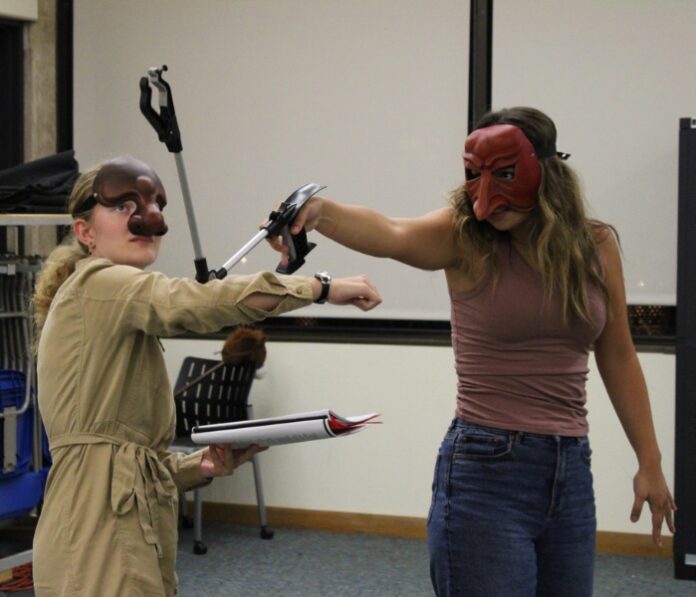
This fall’s Mainstage play opens on Oct. 31: “The King Stag” by Carlo Gozzi. It will be a totally unprecedented experience for those brave enough to see it.
Last year’s theatrical season at UD featured “The Seagull” by Anton Chekhov in the fall and “Our Town” by Thornton Wilder in the spring, both realist plays written in the 20th century.
“The King Stag,” on the other hand, comes from a much older tradition, stemming from the Roman comedy of fabula palliata. The dramaturgy of this play is essentially different from that of most modern, Western theater, which has posed challenges for the director and actors.
The play is the story of a king trying to marry a woman who genuinely loves him. His discernment is aided by magic, but then, in turn, the magic works grief for him.
The main characters consist of Deramo, the beneficent king; Tartaglia, his wily minister; Clarice, his misused daughter; Leandro, her love; Pantalone, his father, the amiable and crotchety second minister; and Angela, his beautiful daughter.
Some of the minor characters are Brighella, the officious servant; Smeraldina, a social climber; Truffaldino, innocent of it all; Cigolloti, the chorus; and finally, Durandarte, the magician. These characters are the Commedia types, each with their own mythological masks, who enter into this story.
Director Kyle Lemieux spoke about why he wanted to produce this play. “I wanted the [drama] department to work on something from an older tradition, an older text,” he said. “I also wanted to have students work in a traditional comic vein, exercising those muscles.”
For the last two months the cast has been working hard to exercise these comedic muscles, partially with the help of actor Trey Lyford, who has run a workshop with the cast to aid with their masks and their understanding of physical comedy.
“The King Stag” is an example of Commedia dell’Arte, an Italian tradition of comedy beginning in the mid 16th century. Commedia was distinguished by its use of stock characters who wore archetypal masks, and by prevailing improvisations.
Commedia eventually found its way to France where Moliere was inspired by it to write his plays, such as “Tartuffe.” Commedia even shows a great influence on many of Shakespeare’s comedies, like “Twelfth Night.” Even today, the influence of Commedia thrives in situational comedies on TV. The dramaturgy of this play is essentially different from that of most modern, Western theater, and this has posed challenges for the director and actors.
“The single biggest challenge has been the use of masks,” director Lemieux said. “There are both technical and storytelling challenges associated with their use for the actors. It’s like learning a new language from the ground up. A thrilling and invigorating challenge but we’re all back in 1st grade together making this thing. I’m loving it.”
“If you have never seen a masked play, then come to see ‘The King Stag,’” Director Lemieux says, “I can’t wait to share this joy with our audiences.”
“The King Stag” runs Oct. 30-Nov. 9.